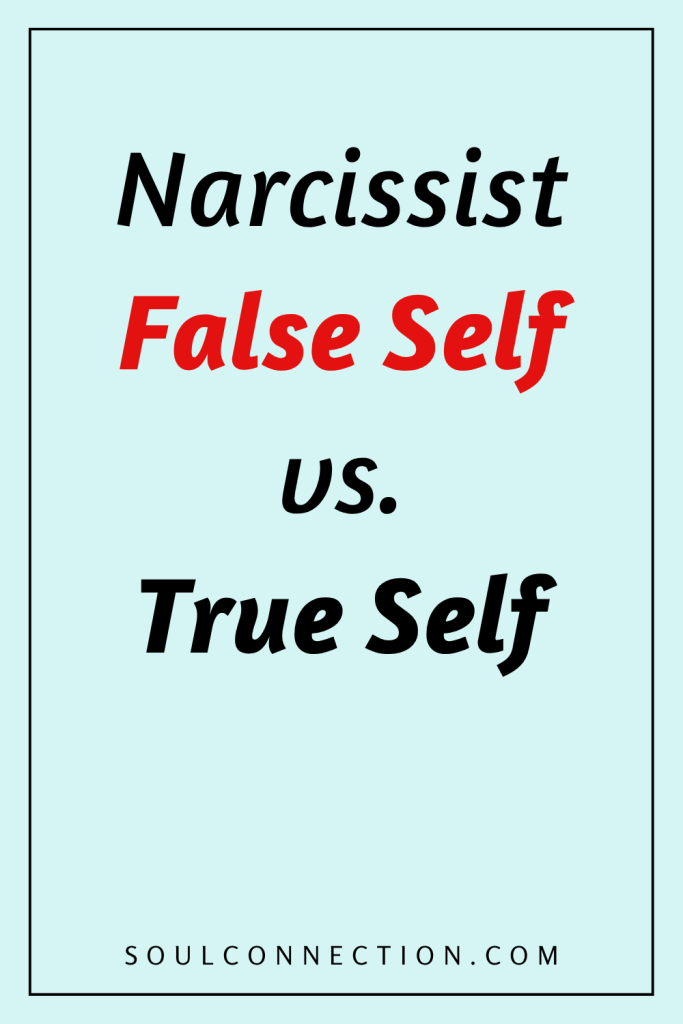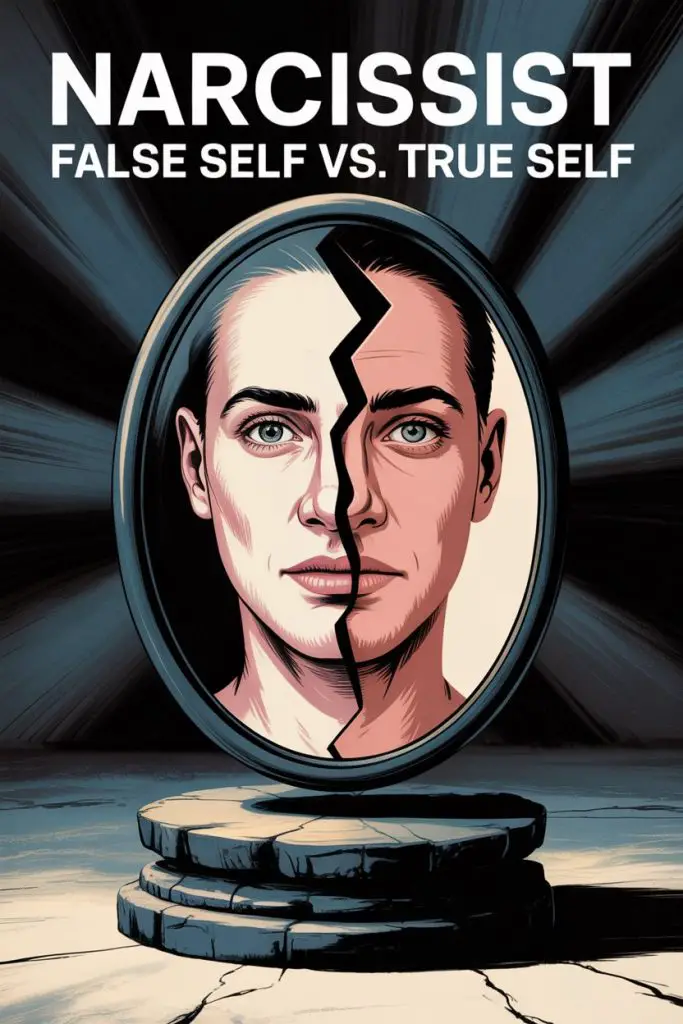Narcissists. The word alone can send a shiver down your spine or have you clutching your phone, replaying that last baffling conversation.
Ever wondered what’s going on behind the cool façade, the bravado, the endless selfies? There’s an inner tug-of-war most people never see: the false self, all showy confidence, and the hidden true self, quietly cowering in the shadows.
Peeling back the layers reveals not just what makes narcissists tick—but why relationships with them can feel like loving two completely different people.
Let’s decode the difference between the narcissist’s false self and true self, and what that means for your heart (and sanity) tonight.
The Narcissist’s False Self What Are We Dealing With
Picture the most dazzling, attention-grabbing actor you know—except the show never ends. The false self is the narcissist’s 24/7 performance, a carefully crafted mask designed to win applause, admiration, and, let’s be honest, control.
This persona isn’t just for parties or Instagram. It’s the version of themselves they want the world (and you) to see: successful, superior, endlessly fascinating. They’re bulletproof, always right, never at fault.
In fact, when the false self is in full swing, you might wonder if you’re dating a superhero—minus the urge to save anyone but themselves.
Don’t be fooled by the bravado. The false self is delicate, ridiculously high-maintenance, and constantly hungry for validation. It can charm the socks off a room, but it’s allergic to criticism and as fragile as a soggy biscuit.
The True Self Quietly Hiding in the Wings
Buried beneath all that swagger and self-importance, there’s a very different creature: the true self. Picture a small, anxious child with a “kick me” sign taped to their back
. This hidden side is scared, vulnerable, and convinced it’s never good enough.
Why the need for all the smoke and mirrors? Narcissists didn’t wake up one day and decide to juggle two identities for fun.
Usually, that true self was wounded early—by harsh criticism, emotional neglect, or chronic feeling of not measuring up. Rather than risk more pain, they built the false self as a suit of armor.
The tragedy? Most narcissists don’t acknowledge that this scared part even exists. If you try to get close, the walls go up, the charm turns icy, and the conversation gets slippery faster than a greased pig.
Their true self is locked away, terrified of being seen (and rejected) again.
How the False Self Shows Up in Relationships
Dating or loving a narcissist can feel like signing up for a rollercoaster you never agreed to ride. When the false self is running the show, expect plenty of fireworks—and not the romantic kind.
The false self loves the honeymoon phase. Think lavish gestures, grand promises, whirlwind romance. You’re swept off your feet and might feel like you’ve found The One. (Spoiler: you haven’t.)
Trouble brews when daily life kicks in and admiration isn’t as abundant as it was on date two. Suddenly, any perceived slight or honest feedback is met with over-the-top defensiveness or those infamous narcissistic rages.
Why? Because criticism, even gentle, threatens to puncture the false self’s balloon.
At this point, the real “relationship” is between you and the mask. Attempts at honest connection are met with blame-shifting, stonewalling, or wild accusations. Vulnerability? Not on the menu.
Spotting the Cracks When the False Self Slips
Occasionally, that shiny mask slips. You catch glimpses of the real person underneath—moments of surprising insecurity, flashes of shame, or inexplicable anger that seems out of proportion to the situation.
Ever asked a narcissist a simple question and suddenly found yourself in emotional quicksand? That’s the false self panicking, desperate to cover up even the smallest flaw.
Sometimes, the mask shatters—think public embarrassment, major setback, or a relationship crisis. The aftermath can look like rage, withdrawal, or even a total personality flip.
These cracks can be confusing. You might feel compassion for the wounded person beneath—but don’t expect them to thank you for seeing it.
Most will slam the door shut and double down on the mask rather than risk genuine connection.
Why the False Self Is So Addictive
Here’s the sticky bit: that false self works (at least for a while). Narcissists get praise, status, and a sense of power. They’re experts at reading a room and knowing exactly which mask will get the most applause.
But all that performance comes at a price. True intimacy is sacrificed at the altar of admiration. Vulnerability is traded for control. And relationships turn into high-stakes games where everyone is keeping score.
Ever feel like you’re being emotionally starved, even as your partner basks in the limelight? You’re not imagining things. The false self can’t nurture; it only consumes.
The True Self’s Secret Desires
Here’s the plot twist. Buried under all that bravado, the true self is desperate for what it fears most: genuine love and acceptance.
Every narcissist wants to be seen and known—just not at the cost of revealing their deep-seated shame.
This inner child craves safety, softness, and connection. Occasionally, it peeks through—a heartfelt apology, a flicker of real sadness, a rare moment when the shield drops.
But just as quickly, the mask snaps back in place, and vulnerability is locked away again.
For loved ones, these glimpses can be both hopeful and heartbreaking. Is change possible? Yes, but only if the narcissist is willing to do the hard, messy work of facing their true self—a journey few willingly choose.
The Impact on You How the False Self Warps Reality
Let’s be honest: loving someone whose true self is in hiding can feel like being gaslit by Houdini. One minute, you’re adored; the next, you’re blamed for everything wrong in their life.
You start questioning your reality, your worth, your sanity.
Relationships with narcissists often come with a heavy dose of cognitive dissonance.
You might think, “They can’t be that bad—they were so wonderful at the start.” Or, “If I just love them enough, maybe they’ll let the real them out.”
This is how the false self keeps you hooked. You’re always chasing those fleeting moments of real connection, hoping the mask will drop for good.
Meanwhile, your emotional needs are put on the back burner and your self-esteem starts to take a beating.
When the Mask Hurts You Reclaiming Your Power
Here’s the straight talk: you can’t fix someone else’s true self, no matter how patient or loving you are. The mask isn’t yours to remove, and trying will only leave you frustrated (or worse, resentful).
But you can take back control of your own happiness. Boundaries are your best bet. Learn to spot the difference between genuine vulnerability (however rare) and another round of emotional smoke and mirrors.
Notice when you’re tiptoeing around someone’s ego, or when honesty feels like Russian roulette. Your needs matter, too. If you’re constantly making yourself smaller to keep the peace, it’s time to check in with your own heart.
Connection is a two-way street. If the relationship always revolves around their image, their needs, their drama, it’s not a partnership—it’s a performance.
Can the True Self Ever Come Out
Change is possible, but it’s more marathon than sprint. Narcissists who are willing to face their own pain—and get professional help—can slowly chip away at the mask.
Therapy, honesty, and a willingness to be truly seen are essential.
Don’t fall for promises that sound too good to be true. Real transformation takes years, not weekends. Set your expectations realistically.
If you spot genuine remorse, sustained change, and a move toward honest connection, that’s a hopeful sign. But don’t accept breadcrumbs of vulnerability as a full meal.
If you’re co-parenting or can’t step back from the relationship, boundaries become even more important. Prioritize your well-being, and don’t be afraid to seek support for yourself.
Loving with Eyes Wide Open
Every relationship has its quirks, but loving a narcissist means living with a constant game of hide and seek. The false self might be dazzling, but it’s the true self—raw, scared, messy—that’s capable of real love.
Trouble is, that part rarely comes out to play.
You deserve to feel cherished, seen, and safe. If you’re caught in a cycle of confusion, blame, and longing for the “real” person to show up, it’s not your job to fix what’s broken behind their mask.
There’s a world of connection waiting outside the theatre of the false self. Take a bow, walk offstage, and step into the spotlight of your own life.
The truest love starts when you let yourself be seen—mask-free.


